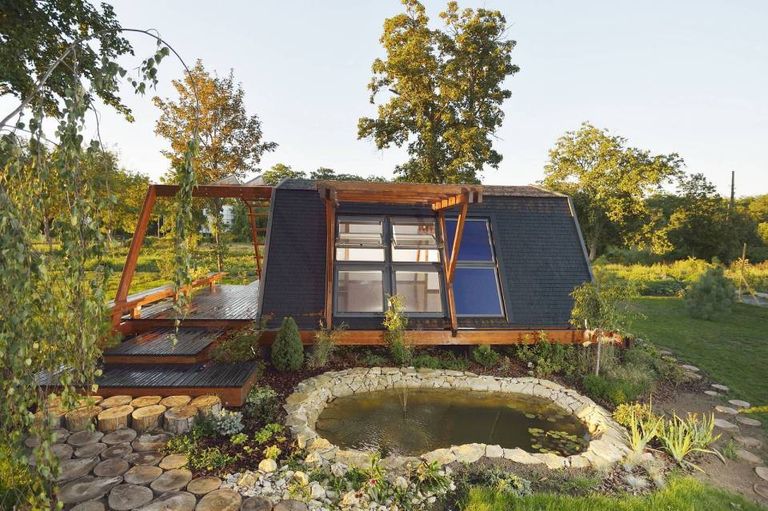Installing a pond is an excellent way to add value to your home. Not only will it increase the aesthetic appeal of your property, but it can also bring a multitude of other benefits, such as providing habitat for wildlife, helping with soil erosion control, and reducing noise pollution.
Before installing a pond, you need to consider the type of environment you plan to create and determine if it’s suitable for local wildlife. If so, research which plants and animals are best suited for your pond before beginning any construction work.
You may even want to consult with experts who specialize in landscape ecology to ensure the most beneficial outcome.

What Factors To Consider When Installing A Pond
When installing a pond, you should consider several factors, such as the property size, the local climate and topography, and the availability of natural resources. It is also essential to think about whether or not you plan on using it for recreational purposes.
For instance, if you’re planning on stocking fish in your pond, you will need an aerator to ensure a sufficient oxygen supply for them.
Before beginning construction, you should also be aware of any regulations that may apply to creating a body of water within your region. From which aquatic plants to use to which type of lining is best suited for your pond, there are many choices you must make before installing a pond.
Benefits Of Installing A Pond
- Aesthetic Appeal
Installing a pond can increase the value of your home by adding aesthetic appeal and making it more attractive to potential buyers. A pond serves as an eye-catching addition to any property and can be a great way to create a calming atmosphere.
- Habitat
A pond can also provide a habitat for wildlife, allowing them to flourish within your backyard. This can bring joy to you and guests alike as you observe the many creatures that call your new water feature home.
- Erosion Control & Noise Pollution Reduction
Installing a pond on your property will also help reduce soil erosion due to its ability to absorb excess runoff from rain or snow melt. Additionally, it will reduce noise pollution by providing a buffer between busy roads and residential areas.
- Recreational Benefits
Finally, having a pond on your property can provide recreational benefits such as fishing or swimming in warmer weather. This can attract prospective buyers who appreciate the extra convenience that comes with owning a body of water.
Installing a pond can be a great way to increase the value of your home. Still, it’s crucial to consider the local environment, regulations, and potential recreational uses before taking the plunge.
With a bit of research and planning, you can create a beautiful and beneficial feature on your property.
Planning & Building Your Pond
Once all these considerations have been taken into account, it is time to start planning and building your pond. When creating a design, there are fundamental principles to keep in mind.
- First, the shape of the pond should have gradual slopes at the sides so that plants and animals can access it easily.
- Second, an overflow outlet should be built into the design to provide a means for excess water to escape during heavy rains or floods.
- Lastly, rocks and plants should be placed around the pond’s edges to give it a natural look.
The construction process is relatively straightforward, but you may need specialized tools depending on your desired outcome. In any case, you’ll want to make sure that you have all necessary materials beforehand, such as Liners, pumps, filters, etc.
Once everything is ready, follow your design plan and build it up layer by layer until the desired shape is achieved. Finally, test the water’s pH levels and add any required plants or animals before enjoying your beautiful new pond.
Where Should You Place Your Pond?
When deciding where to place your pond, you should take into account the local environment, sun exposure, and how it affects your home.
Ideally, the pond should be located in an area that receives plenty of sunlight during the day. This will help promote photosynthesis in marine plants and provide a habitable environment for fish and other wildlife.
Avoid placing it too close to trees or shrubs, as this may introduce debris or pollutants into the water. It is also essential to ensure that your pond is not easily accessible by pets or children who may accidentally wander into it.
Final Words
A pond can be a great addition to any home, providing aesthetic appeal and extra recreational opportunities while promoting local wildlife. Before building, consider the local environment, regulations, and potential recreational uses.
Once all these factors have been taken into account, you can begin constructing your pond. Whether you plan to sell your house in the future or want to increase your property’s value, investing in a pond can be a great decision.